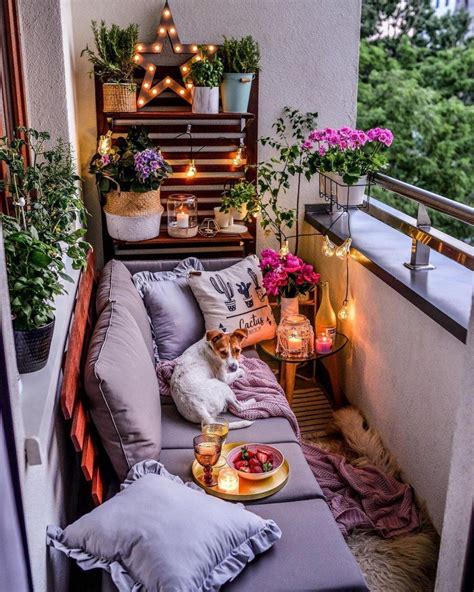Top 5 Strategies for Harmonizing Plants and Furniture on Your Balcony
Balancing plants and furniture in a small balcony space can be challenging. Whether you’re working with a tiny urban balcony or a larger outdoor space, finding harmony between comfort, functionality, and aesthetics is key. This guide offers five practical strategies that will help you optimize your space for both furniture arrangement and urban gardening, creating an oasis that’s both relaxing and beautiful.
1. Optimize Your Space with Vertical Gardening
One of the most effective ways to balance plants and furniture on a small balcony is by utilizing vertical gardening. By placing plants on shelves, hanging pots, or using trellises, you free up valuable floor space. This not only maximizes space but also enhances your overall plant placement. Vertical gardening is especially useful in urban settings, where floor space is limited. It helps maintain a sense of openness while still incorporating plenty of greenery.
Key Benefits:
- Space optimization – Frees up floor space for more seating or functional furniture.
- Creates visual layers – Adds height and depth to your balcony’s design.
- Practical for small spaces – Ideal for balconies with limited square footage.
Example Setup:
| Type of Plant | Best Vertical Placement | Recommended Planter |
|---|---|---|
| Herbs (e.g., Basil, Mint) | Wall-mounted shelves | Small terracotta pots |
| Trailing plants (e.g., Ivy) | Hanging baskets | Wire planters |
| Succulents | Window ledges | Shallow containers |
2. Choose Multifunctional Furniture
When designing a balcony with both plants and furniture in mind, opt for multifunctional furniture. A bench with built-in storage, for instance, can double as a seating area and a place to store gardening tools. Likewise, a table with foldable sides or stackable chairs can be easily rearranged as needed, ensuring flexibility in the space. This practical furniture arrangement tip allows you to balance the need for comfort while keeping space for plants.
Key Benefits:
- Maximizes usable space – Combines functionality with aesthetics.
- Helps maintain balance – Prevents the space from feeling overcrowded with either plants or furniture.
- Provides flexibility – Furniture can be rearranged as plants grow or seasons change.
Examples of Multifunctional Furniture:
| Furniture Type | Additional Function | Ideal For |
|---|---|---|
| Storage Bench | Gardening tool storage | Small balconies |
| Foldable Table | Space-saving dining | Flexible use of space |
| Stackable Chairs | Easy storage | Balconies with limited space |
3. Focus on Container Gardening
Container gardening is a smart approach for balcony gardens, as it allows you to control the placement and growth of your plants easily. By using pots and containers, you can rearrange your plants to suit your furniture layout. This offers flexibility, making it easier to optimize your space. Choose containers of different sizes to create an aesthetically pleasing arrangement that integrates with your balcony’s outdoor decor.
Key Benefits:
- Portable – Move plants as needed to make room for furniture.
- Customizable – Choose containers that match your style and decor.
- Efficient use of space – Suitable for small spaces and urban settings.
Container Gardening Examples:
| Plant Type | Recommended Container Size | Placement Tip |
|---|---|---|
| Tomatoes | Large (12-inch pot) | Place near railing for sunlight |
| Lavender | Medium (8-inch pot) | Keep near seating areas for fragrance |
| Chili Peppers | Small (6-inch pot) | Place in sunniest spot available |
4. Create Flow with Design Principles
To achieve a cohesive and balanced balcony, it’s essential to consider key design principles. For example, avoid placing all your furniture on one side and plants on the other, as this can create an imbalance. Instead, alternate furniture and plant groupings to guide movement through the space, creating a natural flow. Symmetry can also work well in larger spaces, while smaller balconies benefit from a more asymmetrical design that maximizes every corner.
Key Benefits:
- Enhances overall aesthetics – Achieves a harmonious balance between elements.
- Promotes relaxation – Encourages an inviting and comfortable environment.
- Supports practical use – Optimizes space for both seating and gardening.
Design Principle Tips:
- Use symmetry for larger balconies.
- Balance large furniture pieces with smaller plants to avoid visual clutter.
- Incorporate natural flow by alternating plants and furniture to encourage movement.
5. Incorporate Aesthetic and Practical Lighting
Lighting plays a crucial role in setting the mood on your balcony, especially during the evening. Consider both aesthetic and practical lighting solutions that highlight your plants while providing adequate light for seating areas. Solar-powered lights, string lights, or lanterns can add a soft glow to the space, while spotlights can draw attention to your plant placement.
Key Benefits:
- Enhances ambiance – Creates a cozy, inviting atmosphere.
- Highlights greenery – Spotlights your plants, making them a focal point.
- Improves functionality – Ensures the space is usable in the evening.
Lighting Options:
| Lighting Type | Best For | Installation Tip |
|---|---|---|
| String Lights | Ambient lighting | Hang along the railing or ceiling |
| Solar Lanterns | Eco-friendly option | Place along walkways or table tops |
| Spotlights | Highlighting plants | Position at the base of plants |
Conclusion: Expert Commentary
Balancing plants and furniture on a balcony requires thoughtful planning, a blend of practicality and design, and an understanding of how to optimize space. By using vertical gardening, multifunctional furniture, container gardening, design principles, and appropriate lighting, anyone can create a well-balanced, aesthetically pleasing balcony. Each of these strategies contributes to a space that not only looks good but functions well in an urban setting, allowing you to enjoy both your plants and your furniture to their fullest potential.


